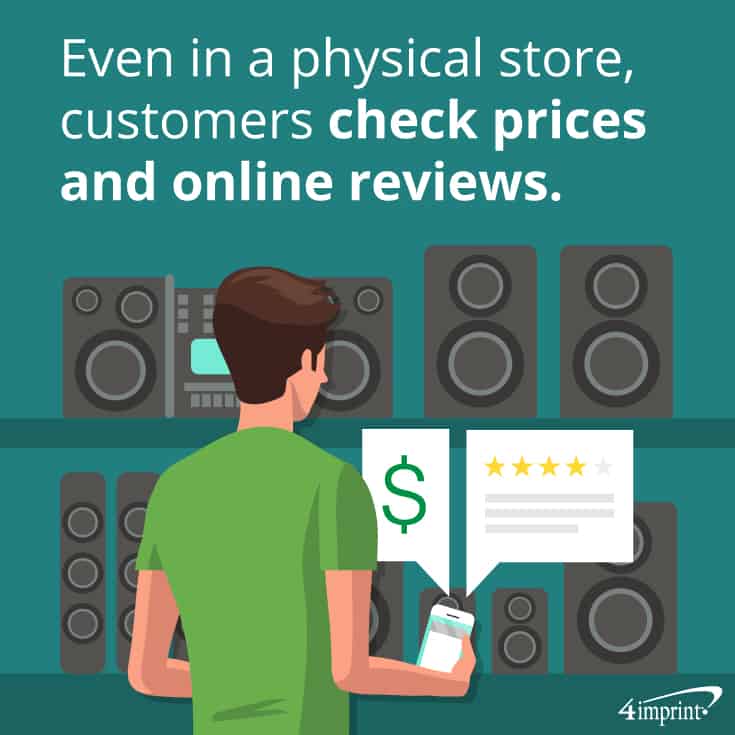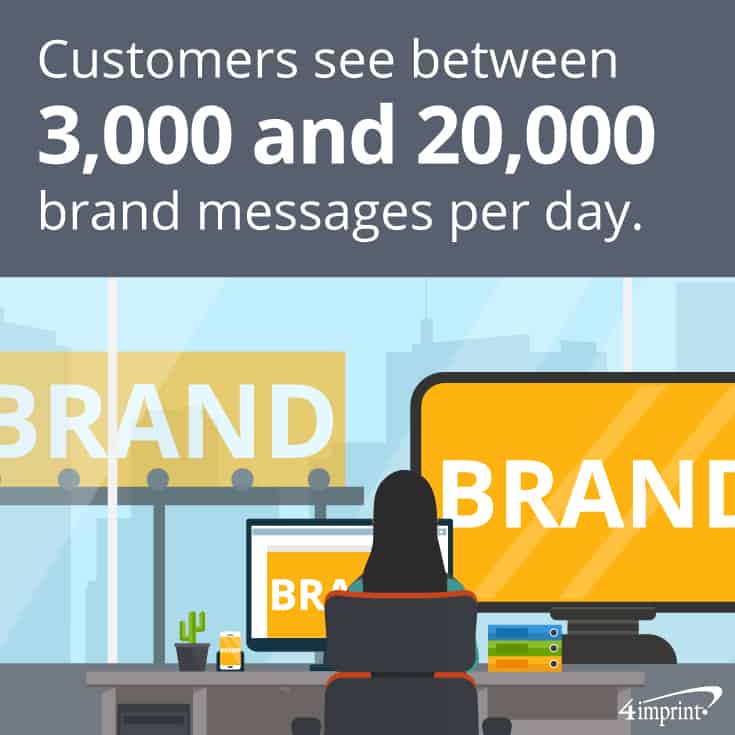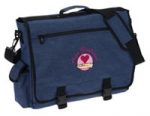We’ve all heard of them—the four Ps of marketing: product, place, price and promotion. In many ways, these classic Ps function as a family unit. Working together, they support each other and help you find new ways to draw in customers.
In 1960, E. Jerome McCarthy brought this family together in his book, “Basic Marketing: A Managerial Approach.” Nearly 60 years later, the family of Ps is still part of everyday marketing conversation.But like many families, the marketing Ps are changing and growing. This Blue Paper will take a look at how modern Ps, along with the perfect marketing swag, can help make the most of your marketing.
Updating the classic four for a new era
While the original 4 Ps have clearly stood the test of time as marketing concepts, business experts have found new and more up-to-date ways of using them.
One suggested method is taking the original four Ps and thinking about them through the lens of the SAVE acronym—Solution, Access, Value and Education. The change in terminology offers an alternate way to use the traditional marketing mix, focusing less on the product or service and more on how the product or service solves customer problems.
Product/Solution
By emphasizing a solution over a product, you focus on what the customer needs instead of what you have. Your product might have lots of amazing features, but if you don’t show how that product solves a customer’s specific problem, it’s unlikely they’ll want to buy from you.
Christie Saas, Executive Director of South West District for Culture, Recreation & Sport, Inc., uses a variety of unique marketing gifts to help remind communities of the solutions her organization can offer. The group helps people in southwest Saskatchewan develop their community culture, recreation and sport programs.
For example, they’ve started giving out unique and fun products—items like the Cinema Box Light-Up Keychain or the Reversible Sequins Keychain. “We know that swag has a life of its own sometimes,” Saas said. “So if we give an item like this to someone, he may give it to his daughter because she’ll think it’s fun. And our name is on it so they’ll know it came from us. We’re hoping they’ll hold onto it, and later think, ‘They’re going to run a coaching workshop, I should look into that.’ We’ll get a call then, so it’s planning long-term.”
Using swag to remind people of the solutions you provide helps keep the organization top of mind.
Place/Access
Because we now live in a world where you can, in theory, sell your solution anywhere in the world, you need to determine who will access your product and how you plan to make it accessible.
This means determining your target market ahead of time—and considering how they’ll find you. You’ll want to consider how you will make the product/service available to customers. Will it only be available in stores? Online? Both?
Making your product or service available online adds a whole new definition to “access.” Will you have staff operating your sales site, help lines or Twitter® account 24 hours a day, seven days a week?
Price/Value
Much like “place,” “price” can be strongly affected by technology. In fact, many customers now shop with their smartphone, comparing prices and checking online reviews even when they’re in a physical store.

Since consumers now have many more options when it comes to finding the best price, be sure they know the value your product or service provides.
Customers may be willing to pay more for a product once they understand all of its benefits. When deciding your price point, consider what sets your product apart, such as:
- It requires less maintenance than similar products from other companies
- Your exceptional customer service makes it simple to buy and use
- It has features other products don’t have
Telling customers what your product or service can do for them that no one else’s can makes your product more desirable, even if the price is higher than a competitor’s.
Promotion/Education
When you think of promotion, you probably envision ads, social media posts, trade shows and direct mail. While those are all valid, they’re also so frequent that customers often tune them out. After all, they see between 3,000 and 20,000 brand messages per day. Ignoring online advertising content, for example, is so common there’s even a term for it: banner blindness.

That’s why Forbes® recommends teaching customers instead of selling to them. Offering them information they can use will help build trust in your brand and products. Providing crucial information while keeping sales in the background can be tricky. Here are some tips:
- Don’t include a call to action: Don’t use information as a selling point. Tell them what they want to know and then provide your website, phone number and business name. They’ll contact you to learn more.
- Show don’t tell: Instead of providing a list of features, talk about the benefits your product provides. How does your business solve their problem? How are your product or services different? What makes you stand apart from competitors?
- Give generously: Instead of using email and social media to share self-promotional content, focus on sharing broader information and useful tips on your industry or area of expertise. Keep promotional information to a minimum—just 5-10 percent of the time.
Expanding the family
About 30 years after the four Ps were introduced, Bernard H. Booms and Mary J. Bitner added three more Ps—process, people and physical evidence. Much like a beloved cousin, they look similar to the original family but aren’t quite the same. And they’re great to have around to lend a hand when needed.
Process
At its heart, process is about using data and logistics to ensure you have the proper amount of product on hand at any given time. For example, you can determine how much product you’ll need in the future by looking at your sales numbers. This, in turn, allows you to purchase the right amount of materials. That helps keep costs down by preventing last-minute purchases and having to pay staff overtime to make sure supply meets demand. Monitoring this data saves you money that can potentially be passed on to customers.
People
Interaction with your staff often happens before anyone ever uses your product or service. So having helpful, competent employees as the first “face” of your product or service is an important part of the marketing mix.
How critical is that first face? A happy customer will tell nine people about their customer experience. But an unhappy one will tell 16. It even affects how much you can charge for a product. According to one study, 42 percent of consumers would be willing to spend more for a friendly, welcoming experience.

Physical Evidence
Physical evidence is perhaps best described as creating an environment that meets customers’ expectations about your product. Perhaps the easiest example is airline tickets. A first-class ticket on a major airline has a higher cost, but it also comes with more amenities. A less expensive ticket with a budget airline would have smaller seats and fewer perks.
This physical evidence also extends to product packaging or branding. Even the appearance of staff—like the uniform they wear or the promotional products they carry—provide a physical demonstration of the quality of products or services you offer.
Jessica Bermel, a Marketing Analyst at 1st Choice Savings and Credit Union in Lethbridge, Alta., knows how one piece of marketing swag can help customers see employees as experienced problem-solvers.
Every manager receives a leather Zippered Portfolio, which helps them look professional while also helping with brand recognition. “When I’m using it, I look 10 times more organized,” Bermel said. “I’m a firm believer that every little bit helps when it comes to promotion. When our people are out at meetings, looking sharp, carrying their portfolios, I think it helps show off our company in the best light.”
In other words, their customers expect to see smart, competent staff members. And the portfolio helps staff members achieve that look.
The portfolios also serve as marketing gifts for business customers. “We initially gave them away as a thank you to our corporate clients,” Bermel said. “We’ll also give them to new small business vendors.”
The eighth P—and beyond
In addition to the three new P cousins, multiple marketing experts have added alternate Ps to consider. Much like the others, they can be useful when determining the best way to offer customers value:
- Productivity & Quality: Are you passing your best quality and pricing along to customers?
- Partners: What kind of partnerships can help the company function better?
- Packaging: How well does the packaging reflect your product?
Marketing with the new family of Ps
Much like marketing, every family grows and changes over the years. And just like a family, promotional swag and the new Ps of marketing can serve as critical support just when you need it most.

